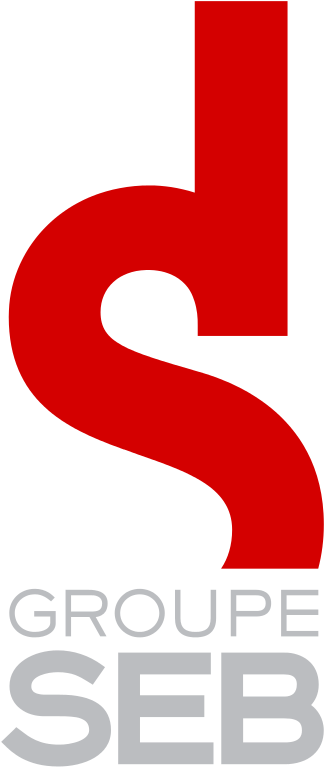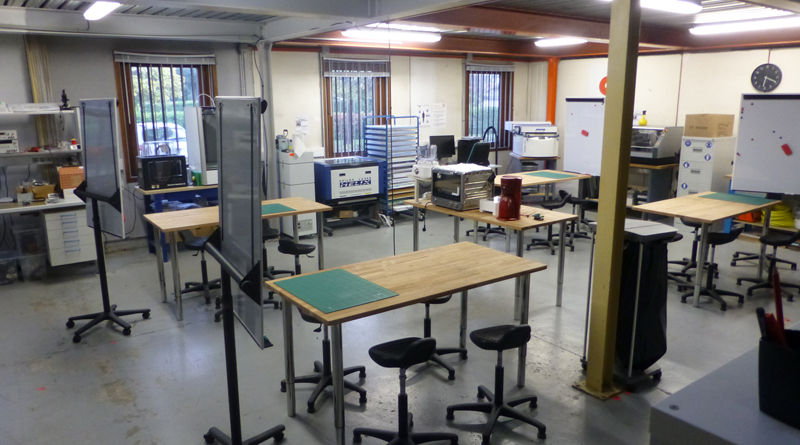The date is September 21, 2015. I am once again in Lyon to work with a client on a cutting edge technology project. I use this as an opportunity to drop by our friends at Groupe Seb and pay the SEBLab my first visit. Three components leave an impression on me: the team, the organization, as well as the in-house methodology. What follows is my recap of this trip.

SEBLab: a fablab focused on incremental innovation
Our entry point is the kitchen — according to Jean-Louis, a strategic point. I learn that SEBLab is a tool used to accelerate innovation within Seb, but also for training and team building. It comes as quite a surprise to me when I find out that SEBLab services the group’s Business Units, and that its central mission is incremental innovation. Others go for breakthrough innovation and “new territories”. At Seb, pragmatism is golden.
SEBLab: a fablab to cut across silos and accelerate innovation
The stage-gate R&D processes used by Business Units suit downstream (development) projects better than upstream (research) projects. The steps in the stage gate are opportunities for BU Marketing, R&D, and Design to meet outside of their respective silos. However, this process does not allow for any collaboration of substance between these functions. SEBLab strives to cut across these silos and to experiment new concepts with minimal delay, and with mixed teams (with members originating from R&D, Marketing and Design, at the very least). Design Thinking enthusiasts should be nodding in approval.
SEBLab: an in-house process based on pragmatism
The methodology of SEBLab comes from inside. It is quite pragmatic. Nevertheless it bears a striking resemblance to Idéo Design Thinking or a DKCP-style approach. This tells us it contains a lot of common sense. This is what it looks like, in a nutshell:
1. Kick Off: a BU brings a project. A first core team workshop (R&D, Marketing and Design) is set up to define the scope.
2. Prospection: SEBLab produces a full spectrum review of the state of the art and of the existing knowledge, both internal and external. Recent trends are researched across 360 degrees. Technology, applications & uses, business models: nothing escapes the team’s scrutiny. Elements of the notion of Innovation Intelligence developed in my latest book are to be found here.
3. Creativity: the prospection work is shared with the rest of the project team over the course of a workshop. This serves to launch the creativity phase in proper. The goal is to generate and sharpen concepts in light of both the existing knowledge (internal and external), and the knowledge that needs yet to be gained.
4. Materialization: rapid prototyping and pitching. During this step, the objective will be to convince BU managers that the demonstrator prototypes have the right potential.
5. Testing: this step remains embryonic at Seb. It consists in testing the prototypes with clients. This would yield true Innovation Intelligence, going beyond the results of trend monitoring (step 2), which isn’t capable of producing exclusive knowledge. The test phase alone can take consumer reactions into account: what usages of the product do they come up with? Is business model robust? Etc. This new knowledge is essential, and feeds back into the innovation process.
SEBLab: riding the fablab trend or real business value?
A year and a half and twenty projects in, it is still too soon to measure the business impact of the SEBLab. Four of five projects went all the way and found their way into corporate R&D. The first products will come out in a couple of months: by then it will be possible to judge to what extent SEBLab accelerated innovation. That said, this fablab has already managed to break down silo barriers and to promote creative steering in the organization — already quite a success in itself.
I’ll be be keeping an eye on them.
***
*
Check out SEBLab at the second edition of the Innovation Ecosystem Agora Forum.



Très juste cet article sur le Seblab. C’est en plus une expérience réussie de collaboration entreprise écoles car deux étudiants du master PIC (projet innovation conception X HEC Télécom) (Geoffroy Nicolas et Elise Cadilhac) ont conçu et travaillé sur le processus et l’organisation du Seblab. J’ai eu le plaisir de les encadrer. Depuis d’autres élèves du master PIC font leur stage dans des espaces similaires: SNECMA, Air Liquide, THALES, etc. Un axe de recherche est lancé et une thèse est en cours avec ALTRAN notamment. Sihem Jouini jouini@hec.fr